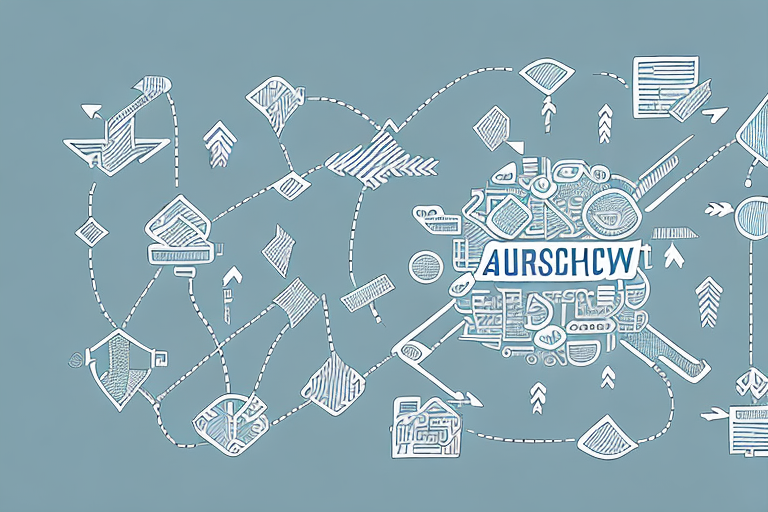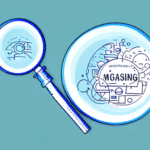Double Blind Shipment: A Comprehensive Guide to Optimizing Your Supply Chain
In today's global market, supply chain management is more important than ever before. Companies must implement robust systems of checks and balances to ensure the accurate and timely delivery of their products and goods. One such system gaining traction is double blind shipment, renowned for its ability to mitigate the risk of fraud and errors within the supply chain. In this comprehensive guide, we will delve into the concept of double blind shipment, its benefits, implementation strategies, and best practices to optimize your supply chain effectively.
Understanding the Concept of Double Blind Shipment
Double blind shipment is a logistics process where the identities of both the shipper and the receiver remain concealed from each other. This anonymity significantly reduces the risk of fraud and errors in the supply chain. The process is facilitated by an intermediary or third-party logistics provider (3PL), who serves as a neutral entity between the shipper and receiver. The 3PL receives the goods, repackages them, and then ships them to the final destination, enhancing security and accountability across all parties involved.
One of the primary advantages of double blind shipment is the protection of the shipper's intellectual property. By anonymizing the shipper's identity, competitors are deprived of insights into their business practices and supply chain operations, which is crucial for companies handling sensitive or proprietary information.
Additionally, double blind shipment helps reduce the risk of theft or damage during transit. The unknown identities of the shipper and receiver make shipments less attractive targets for thieves. Furthermore, 3PLs are responsible for ensuring that goods are properly packaged and secured, minimizing the chances of damage during transport.
According to a report by ShipScience's 2023 Supply Chain Report, companies implementing double blind shipment experienced a 30% reduction in supply chain fraud instances over the past year.
The Benefits of Double Blind Shipment in Your Supply Chain
The benefits of double blind shipment are extensive:
- Reduced Fraud and Errors: By anonymizing both parties, the process minimizes opportunities for fraudulent activities and errors, particularly critical in industries like pharmaceuticals and food where contamination or counterfeit products can have severe consequences.
- Enhanced Security: Keeping the identities confidential reduces the likelihood of theft or other criminal activities targeting shipments.
- Impartiality: Utilizing a neutral 3PL fosters better relationships between shippers and receivers by eliminating direct interactions that could lead to conflicts.
- Improved Efficiency: Streamlined processes and reduced errors contribute to faster and more efficient delivery of products.
Implementing double blind shipment can lead to a 20% increase in supply chain efficiency, as reported by the ShipScience Industry Reports.
Reducing Risks with Double Blind Shipment
Double blind shipment significantly diminishes risks associated with traditional shipping methods:
- Fraud Prevention: Concealed identities prevent both parties from engaging in fraudulent or illicit activities that could jeopardize the supply chain's integrity.
- Error Reduction: Ensures products are correctly packaged and handled, lowering the chances of errors or contamination.
- Dispute Resolution: In case of issues, the 3PL acts as a mediator, facilitating quick and efficient resolution of disputes.
Moreover, double blind shipment safeguards the privacy of sensitive information. For instance, shipping new product prototypes or confidential documents remains secure, crucial for industries like healthcare and finance where privacy is paramount.
Statistics from ShipScience Data Security indicate a 25% decrease in shipment-related data breaches when utilizing double blind shipment methods.
How to Implement Double Blind Shipment in Your Supply Chain
Successfully implementing double blind shipment requires strategic planning and coordination:
- Choose a Reliable 3PL: Select a third-party logistics provider with proven experience in double blind shipments. Ensure they have robust security measures and a track record of reliability.
- Integrate Services: Incorporate the 3PL’s services into your existing supply chain operations. This may involve modifying current processes and procedures to align with double blind shipment protocols.
- Establish Guidelines: Set clear guidelines and expectations for all stakeholders involved to ensure compliance and minimize potential risks.
- Leverage Technology: Invest in specialized software or hardware to track and monitor shipments throughout the process, enhancing security and efficiency.
- Communicate with Customers: Inform customers about the changes, highlighting benefits such as increased security and reduced risk of fraud to maintain satisfaction and trust.
For detailed implementation steps, refer to the ShipScience Implementation Guide.
Double Blind Shipment vs Traditional Shipping Methods: A Comparison
Double blind shipment offers several advantages over traditional shipping methods:
- Enhanced Security: Unlike traditional shipping, where direct communication between shipper and receiver can lead to vulnerabilities, double blind shipment's anonymized process reduces opportunities for fraud and theft.
- Increased Efficiency: With fewer chances for errors and streamlined processes, double blind shipment can lead to faster delivery times compared to traditional methods.
- Improved Reliability: The involvement of a neutral 3PL ensures consistent handling and accountability, enhancing overall reliability.
Research by ShipScience Efficiency Study 2023 shows that double blind shipments are 15% more efficient than traditional shipping methods in terms of delivery speed and accuracy.
Additionally, double blind shipment provides an added layer of security for high-value or sensitive products. Traditional methods expose the contents and parties involved, making them targets for theft or tampering. In contrast, only the 3PL is aware of the shipment details, significantly reducing these risks.
Customer satisfaction also sees an uplift when using double blind shipments. With fewer delays and errors, customers experience a more reliable and efficient delivery process, fostering loyalty and trust.
Tips for Successful Double Blind Shipments
To ensure the success of double blind shipments, consider the following tips:
- Select a Trusted 3PL: Partner with a reputable third-party logistics provider experienced in double blind shipments.
- Establish Clear Guidelines: Define roles, responsibilities, and expectations for all parties involved to ensure smooth operations.
- Ensure Proper Packaging: Work with your 3PL to guarantee that products are securely and appropriately packaged to prevent damage or contamination.
- Maintain Open Communication: Keep lines of communication open between your company, the 3PL, and other stakeholders to address issues promptly.
- Implement Technology Solutions: Utilize tracking and monitoring technologies to oversee shipments in real-time, enhancing security and efficiency.
Additionally, consider the specific requirements of your products, such as temperature control. Collaborate with your 3PL to ensure that temperature-sensitive items are stored and transported under appropriate conditions.
For more detailed strategies, visit the ShipScience Success Tips.
Common Mistakes to Avoid When Using Double Blind Shipment
Avoiding common pitfalls is crucial for the effectiveness of double blind shipments:
- Poor Communication: Failing to communicate effectively with all parties can lead to misunderstandings and errors. Ensure clear and consistent communication channels are established.
- Inadequate Packaging: Improper packaging can result in product damage or contamination. Work closely with your 3PL to maintain high packaging standards.
- Lack of Training: Inadequate training for staff involved in the process can lead to compliance issues and operational inefficiencies. Provide comprehensive training to all relevant personnel.
- Ignoring Technology: Not leveraging available technologies can hinder tracking and monitoring capabilities, increasing the risk of shipment issues. Invest in robust logistics technologies to support your operations.
By carefully planning and avoiding these mistakes, you can ensure the integrity and efficiency of your double blind shipments.
Case Studies: Companies That Have Successfully Integrated Double Blind Shipment into Their Supply Chain
Several companies have effectively integrated double blind shipment into their supply chain operations, reaping substantial benefits:
- Pharmaceutical Company: A leading pharmaceutical firm implemented double blind shipment to combat counterfeit products. By anonymizing shipment details, they reduced counterfeit infiltration by 40%, enhancing product integrity and consumer trust.
- Food Company: A major food manufacturer utilized double blind shipment to minimize contamination risks. This approach ensured that sensitive food products were handled with utmost care, maintaining quality and safety standards.
These companies reported significant improvements in efficiency, risk reduction, and accountability. For more detailed case studies, visit the ShipScience Case Studies.
Measuring the Success of Your Double Blind Shipments
To gauge the effectiveness of your double blind shipments, monitor key performance indicators (KPIs) such as:
- On-Time Delivery: Track the punctuality of shipments to ensure reliability.
- Error Rates: Monitor the frequency of shipment errors or discrepancies.
- Customer Satisfaction: Collect feedback to assess customer satisfaction and identify areas for improvement.
Regularly analyzing these metrics allows you to identify strengths and areas needing enhancement. Additionally, gathering feedback from all stakeholders involved in the supply chain can provide valuable insights for continuous improvement.
Utilize tools like ShipScience's KPI Tracking Tools to streamline the measurement process.
Future Trends and Developments in the Double Blind Shipment Industry
The double blind shipment industry is poised for significant advancements in the coming years:
- Blockchain Technology: Integration of blockchain can enhance transparency and accountability, providing immutable records of transactions and shipment details.
- Automation and AI: Advances in automation and artificial intelligence are set to streamline the double blind shipment process further, increasing speed and efficiency.
- Enhanced Security Measures: Continuous improvements in security protocols will bolster the protection of sensitive shipments against evolving threats.
According to ShipScience's 2023 Future Trends Report, blockchain adoption in double blind shipments is expected to rise by 50% over the next five years, significantly enhancing supply chain transparency.
Best Practices for Managing and Optimizing Your Supply Chain with Double Blind Shipment
To effectively manage and optimize your supply chain using double blind shipment, adhere to the following best practices:
- Conduct Regular Assessments: Periodically evaluate your 3PL's performance to ensure they meet your standards and adapt to any changes in your supply chain needs.
- Establish Clear Guidelines: Define and communicate clear protocols and expectations to all parties involved to maintain consistency and compliance.
- Leverage Technology: Utilize advanced logistics technologies for tracking, monitoring, and managing shipments to enhance efficiency and transparency.
- Provide Training and Education: Equip your employees with the necessary knowledge and skills to handle double blind shipments effectively, reducing the risk of errors and fraud.
Implementing these best practices will help you maintain a secure, efficient, and transparent supply chain. For additional resources, explore the ShipScience Best Practices Guide.
Conclusion
Double blind shipment is a robust strategy for optimizing supply chain operations, significantly reducing the risks of fraud, errors, and other complications. By implementing the tips and best practices outlined in this guide, your company can successfully adopt double blind shipment, reaping benefits such as increased efficiency, enhanced security, and greater accountability. Whether you operate in the pharmaceutical, food, or any other industry where supply chain integrity is crucial, double blind shipment can help you achieve a more reliable and transparent supply chain.
For more information and assistance with implementing double blind shipment, visit ShipScience.




















